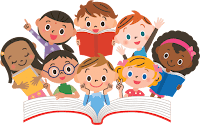While I was keeping a blog this semester it helped me meet the student learning outcomes of this course by self-reflecting, critically thinking and engaging in reading and writing. During this process I have read and written about all of the genres through the entry's in my blog. By reading Tompkins, partaking in a genre workshop and then creating an entry it allowed for me to explore my understanding of each genre's format and experiences I've had with each through the writing process. While I was writing my entries as well I had to think about the purpose of them and who my audience was, in order to craft the entry respectively. When I was crafting the entries, I had written in the format of a journal writing piece, giving my journal entries a title, writing in first person, holding text that examines my own observations of writing, my deeper thinking of genres, and questions that I had developed for myself as well as my peers and Dr. Jones. The purpose of my entries is evident, being that all of my entries explore my reflections on reading and writing in the classroom with the support of Tompkins and other articles I had read. In my blog entries I had thought through my writing, of strategies that we were introduced to that could be useful to my future students, and ways that I could incorporate them into my scheduled writing block. The biggest way I believe that this blog has helped me meet the student learning outcomes is how much writing I have done through my thinking in the blog entries. Writing has allowed for me to put my cognitive thinking down on paper, and has helped me to sort through the ideas in my head. The ability to have done this thinking through writing in my blog entries allowed for me to comprehend not just the readings but the genre workshops as well. The writing forced me to reflect on the key takeaways, what is the most impactful activities, and what questions am I still left with. It's important as both readers and writings, to have questions because our questions can lead to insightful discussions with our peers.
I do want to add a note that within this process I have additional learned the impact of using our blogs as a way to form a discussion and gain new perspectives. My peers and myself have gone through this genre exploration and blog writing process together. However it's remarkable to see how we each have taken key attributes to the genre and explored them in different ways through our writing of entries. The weeks that I had gone through and read different blog entries from my peers, It made me have my own ah ha moments, think about a genre in a different light, or even answer a question of mine. I can see how blog entries can be used as a way to start discussion or gain perspective. In the future I hope that I can use journal writing in a way that my own students in the classroom in a way that they're able to reflect on their own thinking through writing, gain perspective from peers, and praise each other for their new learnings.












